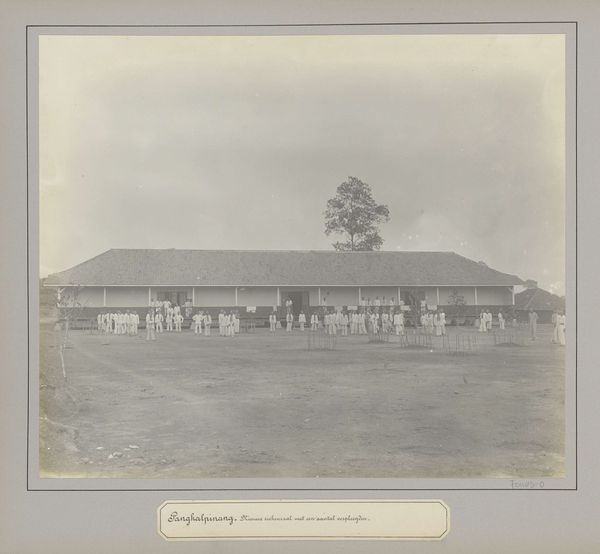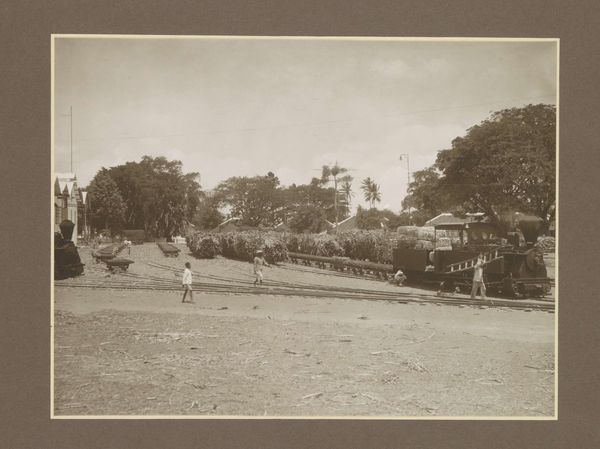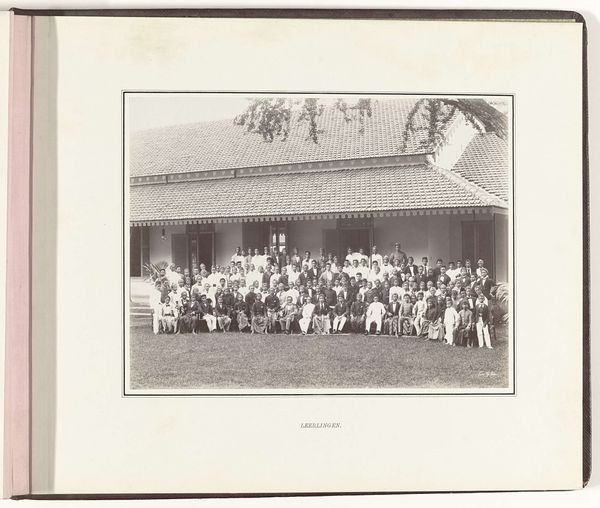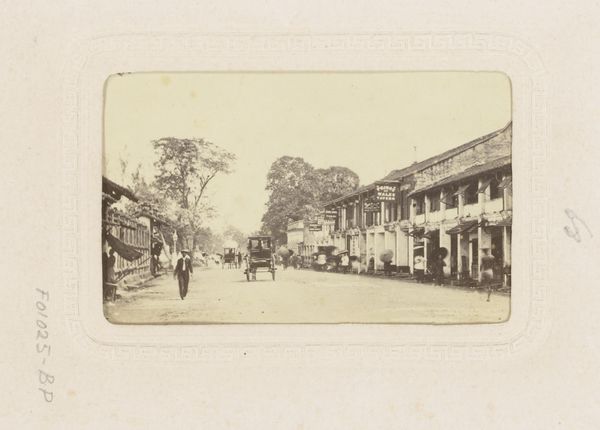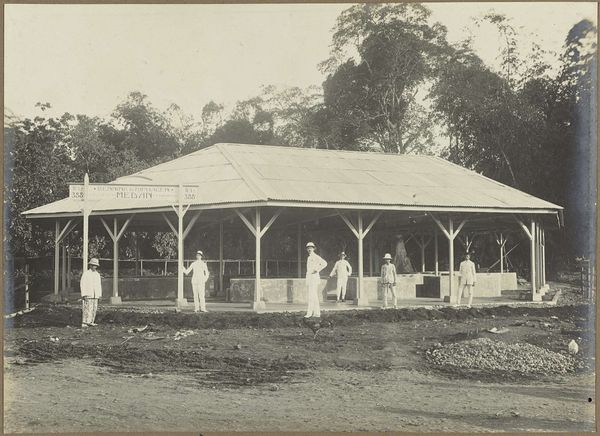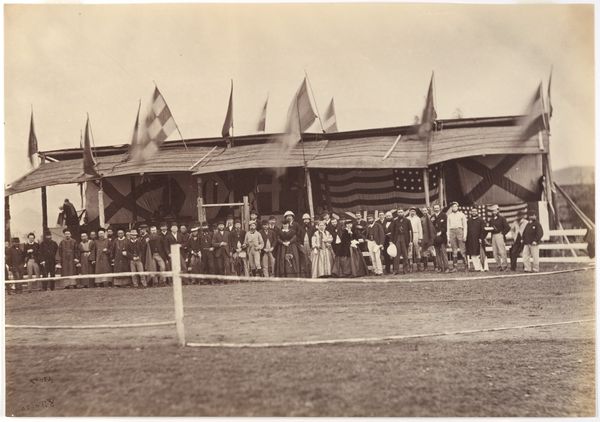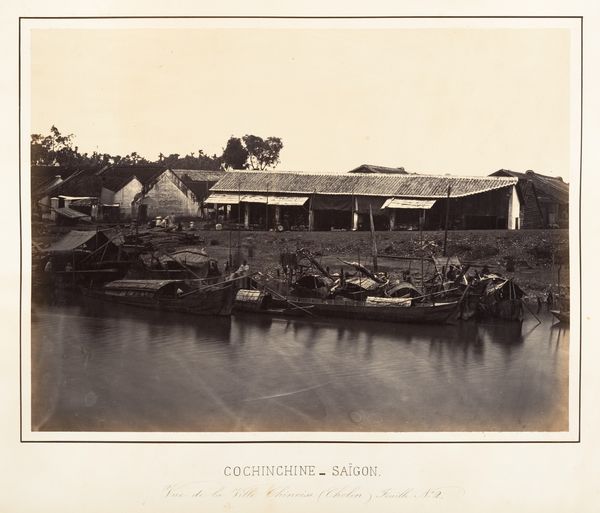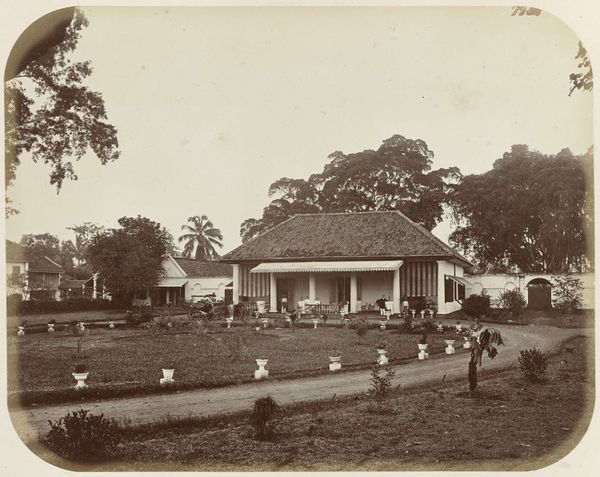
photography, albumen-print
#
asian-art
#
landscape
#
house
#
photography
#
orientalism
#
19th century
#
men
#
cityscape
#
genre-painting
#
albumen-print
Dimensions: 20.7 x 31.1 cm (8 1/8 x 12 1/4 in.)
Copyright: Public Domain
Editor: This albumen print, “Cortège d'un mariage, Cochinchine,” taken by Emile Gsell in 1866, really gives you a sense of the time period with its sepia tones. It feels almost staged, very formal. What do you see as particularly important about this photograph? Curator: I see a work deeply embedded in the visual politics of colonialism. Gsell, a Frenchman, photographing a wedding procession in Cochinchina, now part of Vietnam, frames the event through a very specific Western lens. It's less about accurately depicting the lived experience and more about constructing an image of the "Orient" for European consumption. Editor: So you're saying that Gsell's photograph catered to European expectations of what a wedding in Cochinchina "should" look like? Curator: Precisely. The composition, the way the figures are arranged, even the details included or excluded, contribute to a narrative of exoticism and difference, reinforcing existing power dynamics. Photography, at that time, wasn't just a means of documentation, it was a tool for shaping perceptions and legitimizing colonial control. Do you notice how the subjects seem almost passively on display? Editor: I do. They're lined up as if for inspection, and you can feel that distance. Does the photograph’s display in the Met change its meaning at all? Curator: Absolutely. The museum is never a neutral space. Placing this photograph within the Met's collection gives it a certain authority and further circulates the historically skewed perspective it offers. It also invites us to consider how museums themselves participate in shaping narratives around culture and identity. Editor: That makes me rethink how I originally viewed it! I guess seeing something beautiful doesn't mean it is neutral. Thank you! Curator: It's important to constantly question the context in which we view art, and how historical power structures influence what we see, and how we interpret it.
Comments
No comments
Be the first to comment and join the conversation on the ultimate creative platform.

